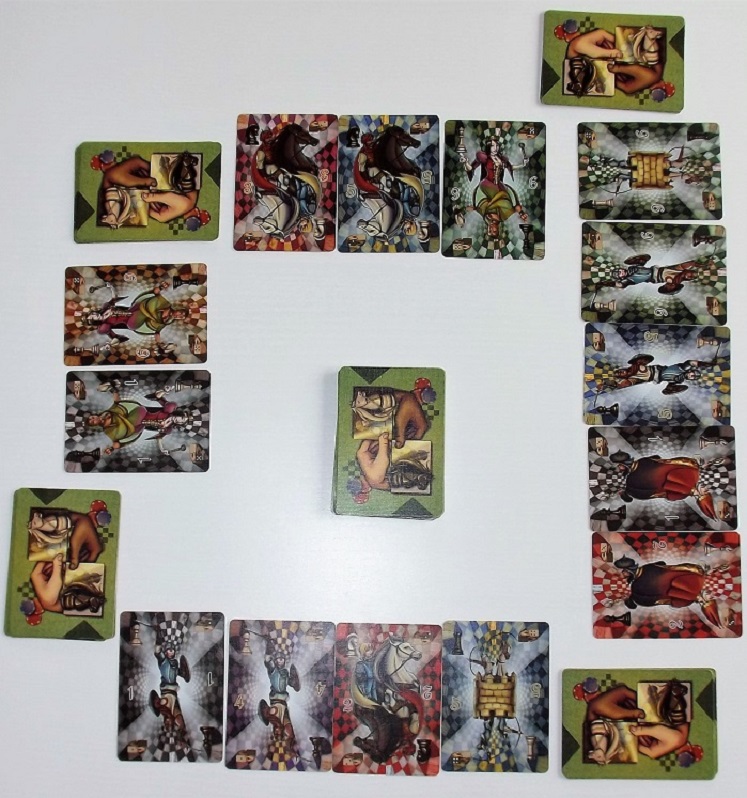BlackDrez
This game is similar to Blackjack, but uses PokerDrez cards.

Rules
In this game, one or two decks of PokerDrez can be used.
Two to eight players can participate.
The cards have a score based on their rank (visible in the upper right corner of the cards):
– Queen: 5 points
– Rook: 4 points
– Bishop: 3 points
– Knight: 2 points
– Pawn: 1 point
The Joker can be worth 6 points or 1 point and can switch between these two values at any point in the round, as the player sees fit.
The objective of the game is to obtain a hand of cards whose total is as close as possible to 11 (including it), without exceeding it.
Development
Each player will receive two face-up cards (visible to everyone).
If any player at this moment, or at any subsequent moment, obtains a hand totaling 11 points, then he will immediately win the round and take all the cards from all players, including his own.
If several players have 11 points in their initial two cards, then all the cards on the table will be distributed equally among them.
The order of the turns will be determined by the number of points each player has, starting with the lowest. If two players have the same minimum score, the next turn will go to the player to the right of the player who had the last turn (or the one who dealt the cards if it’s the first turn).
During his turn, the player must decide if he wants to receive another card, something he must do whenever he does not have the highest score (tied with other players), as otherwise, he will lose to the rest. Alternatively, he can choose to withdraw from the hand, recovering half of his own cards for his pile and leaving the rest as trophies for the player who wins the round.
The new card received by the player will be added to the points he already has and can result in the following variations:
1. The new score is greater than 11 points, causing the player to lose the round and forfeit all cards on the table at that moment.
2. The new score is exactly 11, immediately winning the round and acquiring all the cards from all players for his pile.
3. The new score is no longer the lowest of all, passing the turn to the player with the new lowest score.
4. The new score remains the lowest of all, and the player will also start the next turn.
Turns will continue until only one player with a score less than 11 remains, who will take all the cards on the table.
If several players all have the same score (less than 11 points) and none of them wants to request another card, then they will tie, and the cards will be distributed equally among them.
Once a round is finished, the next one begins with a new deal of two cards per player.
The overall winner of the game is the player with the most cards in his pile at the end.
Example

In the upper image:
The player at the top has 9 points.
The player on the left has 10 points.
The player at the bottom has 8 points.
The player on the right has 12 points, exceeding 11, and has lost.
The next turn, therefore, belongs to the player at the bottom. He checks that with 8 points, he has a very low probability of exceeding 11 (only if a queen or a rook is drawn), so he decides to ask for another card. In this example, the player receives a joker, which he can use as 6, but he chooses to use it as 1, bringing his score to 9 and maintaining the lowest score along with the player at the top. He then requests another card. This card is a pawn, bringing his total to 10 points, and the turn passes to the player at the top.
The player at the top takes a risk by asking for another card, and luck is on his side with a knight worth 2 points. Adding this to the 9 points he had, he reaches 11 points, immediately winning the round and taking all the cards on the table.

